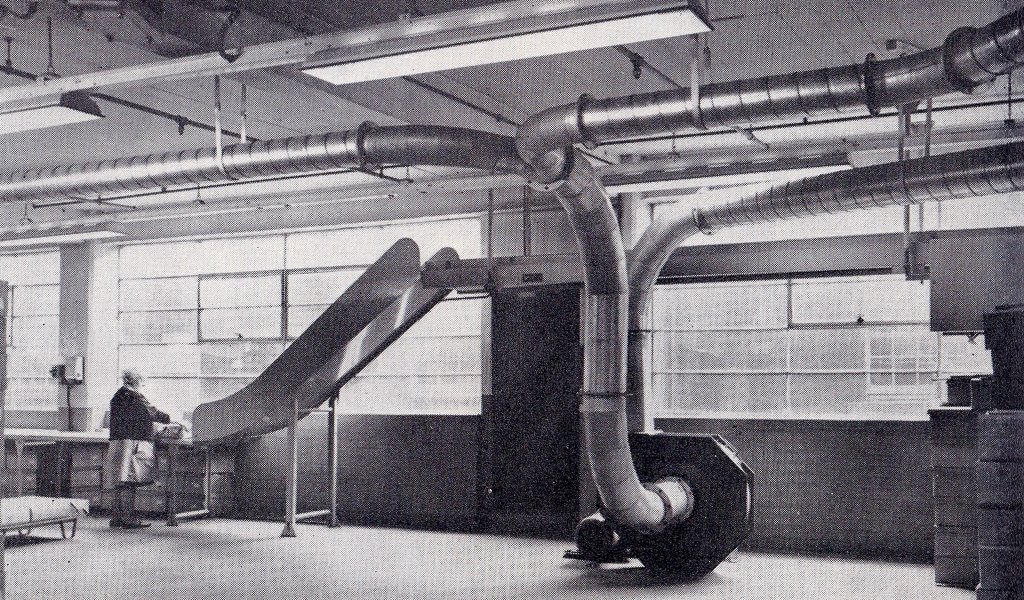Part One
In the first of two studies, Godfrey Holmes examines the firm that became the bedrock of Lower Brampton.
FOR 150 years after 1839, Lower Brampton, Chesterfield’s immediate western suburb became inseparable from the amazing and multi-faceted enterprise established by local chemist John Bradbury Robinson, just after he had purchased a tiny factory in Middleton-by-Youlgreave.
What started with 25 people in Wheatbridge House making square pill-boxes, round ointment boxes and willow cigar boxes grew, by Centenary Year 1939, to become 3,700 “hands” all along the River Hipper, making everything from folding cardboard boxes to patent spiral-tube boxes; from bandages to sanitary towels; and from bleached cotton wool to antiseptics.
1884 saw the acquisition of the Holme Brook Works; 1885, the enlarged Wheatbridge Mills; 1896, the multi-storey Walton Works; 1899, Walton Corn Mills and the Walton Dam; 1921, the Portland Works; 1928, Field House, soon transformed to become Bradbury Hall, the catering and social hub of what had become Robinson & Sons Ltd.
And cometh the company, cometh the company magazine: in this case, the quarterly LINK, price tuppence, despatched in a large brown envelope, sixpenny postage prepaid, to retired employees both in Chesterfield and far afield. It is the chance discovery of six copies of LINK dated 1967-68, addressed to the late Alfred Walker of Barker Lane, Lower Brampton (where else?) that leads me to look, this month, at Robinson PLACES; next month: Robinson PEOPLE.
LINK follows, or alludes to, lots of Robinson discoveries or rights: not only the amazing Rowntree Smarties’ tube and Quaker Oats’ box; but also Lint and the Gamgee tissue; surgical dressings first trialed in the Crimean War; lidded drums; Mene for menstruation; Paddi-pad nappies; Soft & Pure toilet paper; and all sorts of production machinery – plus the “Loch Ness Monster” robot sweeper. And as, post-war, the company rapidly expanded into unrelated areas such as J.J.Blow dairy filters, stainless steel buckets and farm equipment, LINK was there too.
A first glance at any edition of LINK might find the Robinsons curiously familial: each factory dependent on its neighbour and their performance. So it was that the contemporaneous QR – Quality & Reliability – initiative led to a big exhibition; also the then Duke of Edinburgh’s personal imprimatur. One annual Robinson trip out was to Chorley in Lancashire – another Griffin packaging plant; after tea and biscuits onward to Blackpool for a little unwinding! Months later: another busman’s holiday to the renowned Smith & Nephew, Kingston-upon-Hull.
Back in Brampton, there are references to the world’s then-only Preparatory School: 1918, soon copied by Lady Mayoress Violet Markham’s training for her very junior nurses; and to initially unfamiliar Robinson outliers: Towels; the Guillotine Department; Round Boxes; the Folding Cotton Department; Cellulose; Pressure-sealed Plastics; Carding; Apprenticeship; Estimating; Weaving; Small Orders; Gumming, Warehousing; and – memories of the 2020 Covid Pandemic – the Disposable Face-Mask Section.
Nor does LINK overlook the great August Bank Holiday flood of 1922: the flood that destroyed nearly the entire Robinson Archive – so many irretrievable documents. The same River Hipper overtopping repeated in the 1930s, 1980s and lately – and destructively – in both July 2007 and October 2023.
And so each paster, bottomer, lidder and shorthand typist: let’s off to the Dam for the Annual Robinson Swimming Contest!






